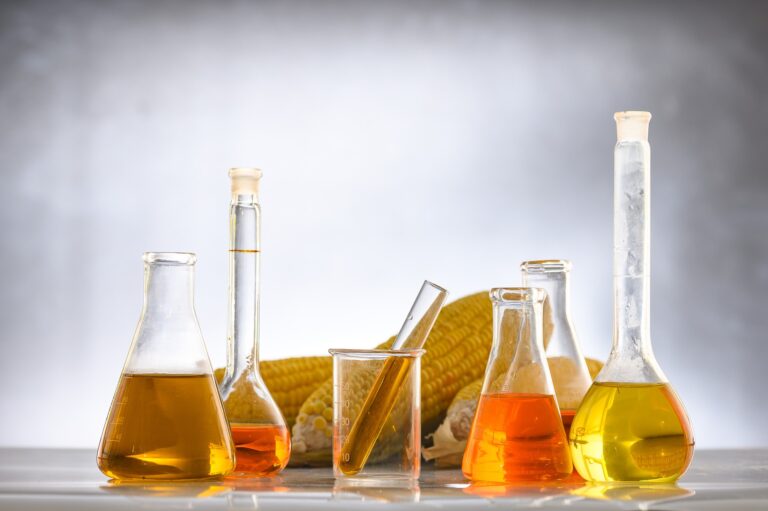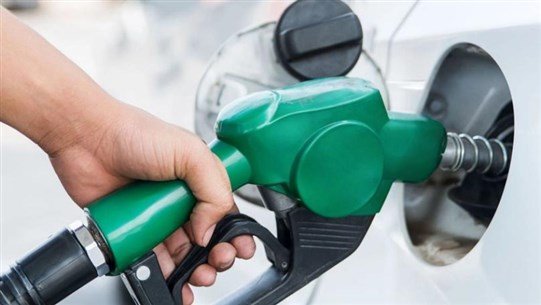The Powerful New Financial Argument for Fossil-Fuel Divestment

In a few months, a small British financial think tank will mark the tenth anniversary of the publication of a landmark research report that helped launch the global fossil-fuel-divestment movement. As that celebration takes place, another seminal report—this one obtained under the Freedom of Information Act from the world’s largest investment house—closes the loop on one of the key arguments of that decade-long fight. It definitively shows that the firms that joined that divestment effort have profited not only morally but also financially.
The original report, from the London-based Carbon Tracker Initiative, found something stark: the world’s fossil-fuel companies had five times more carbon in their reserves than scientists thought we could burn and stay within any sane temperature target. The numbers meant that, if those companies carried out their business plans, the planet would overheat. At the time, I discussed the report with Naomi Klein, who, like me, had been a college student when divestment campaigns helped undercut corporate support for apartheid, and to us this seemed a similar fight; indeed, efforts were already under way at a few scattered places like Swarthmore College, in Pennsylvania. In July, 2012, I published an article in Rolling Stone calling for a broader, large-scale campaign, and, over the next few years, helped organize roadshows here and abroad. Today, portfolios and endowments have committed to divest nearly fifteen trillion dollars; the most recent converts, the University of Michigan and Amherst College, made the pledge in the last week.
No one really pushed back against the core idea behind the campaign—the numbers were clear—but two reasonable questions were asked. One was, would divestment achieve tangible results? The idea was that, at the least, it would tarnish the fossil-fuel industry, and would, eventually, help constrain its ability to raise investment money. That’s been borne out over time: as the stock picker Jim Cramer put it on CNBC a year ago, “I’m done with fossil fuels. . . . They’re just done.” He continued, “You’re seeing divestiture by a lot of different funds. It’s going to be a parade. It’s going to be a parade that says, ‘Look, these are tobacco, and we’re not going to own them.’ ”
The second question was: Would investors lose money? Early proponents such as the investor Tom Steyer argued that, because fossil fuel threatened the planet, it would come under increased regulatory pressure, even as a new generation of engineers would be devising ways to provide cleaner and cheaper energy using wind and sun and batteries. The fossil-fuel industry fought back—the Independent Petroleum Association of America, for instance, set up a Web site crowded with research papers from a few academics arguing that divestment would be a costly financial mistake. One report claimed that “the loss from divestment is due to the simple fact that a divested portfolio is suboptimally diversified, as it excludes one of the most important sectors of the economy.”
The latest findings are making that charge difficult to sustain. For one thing, they come from the research arm of BlackRock, a company that has been under fire from activists for its longtime refusal to do much about climate. (The company’s stance has slowly begun to shift. Last January, Larry Fink, its C.E.O., released a letter to clients saying that climate risk would lead them to “reassess core assumptions about modern finance.”) BlackRock carried out the research over the past year for two major clients, the New York City teachers’ and public employees’ retirement funds, which were considering divestment and wanted to know the financial risk involved. Bernard Tuchman, a retiree in New York City and a member of Divest NY, a nonprofit advocacy group, used public-records requests to obtain BlackRock’s findings from the city late last month. Tuchman then shared them with the Institute for Energy Economics and Financial Analysis, a nonprofit that studies the energy transition.
In places, BlackRock’s findings are redacted, so as not to show the size of particular holdings, but the conclusions are clear: after examining “divestment actions by hundreds of funds worldwide,” the BlackRock analysts concluded that the portfolios “experienced no negative financial impacts from divesting from fossil fuels. In fact, they found evidence of modest improvement in fund return.” The report’s executive summary states that “no investors found negative performance from divestment; rather, neutral to positive results.” In the conclusion to the report, the BlackRock team used a phrase beloved by investors: divested portfolios “outperformed their benchmarks.”
In a statement, the investment firm downplayed that language, saying, “BlackRock did not make a recommendation for TRS to divest from fossil fuel reserves. The research was meant to help TRS determine a path forward to meet their stated divestment goals.” But Tom Sanzillo—I.E.E.F.A.’s director of financial analysis, and a former New York State first deputy comptroller who oversaw a hundred-and-fifty-billion-dollar pension fund—said in an interview that BlackRock’s findings were clear. “Any investment fund looking to protect itself against losses from coal, oil, and gas companies now has the largest investment house in the world showing them why, how, and when to protect themselves, the economy, and the planet.” In short, the financial debate about divestment is as settled as the ethical one—you shouldn’t try to profit off the end of the world and, in any event, you won’t.
These findings will gradually filter out into the world’s markets, doubtless pushing more investors to divest. But its impact will be more immediate if its author—BlackRock—takes its own findings seriously and acts on them. BlackRock handles more money than any firm in the world, mostly in the form of passive investments—it basically buys some of everything on the index. But, given the climate emergency, it would be awfully useful if, over a few years, BlackRock eliminated the big fossil-fuel companies from those indexes, something they could certainly do. And, given its own research findings, doing so would make more money for their clients—the pensioners whose money they invest.
BlackRock could accomplish even more than that. It is the biggest asset manager on earth, with about eight trillion dollars in its digital vaults. It also leases its Aladdin software system to other big financial organizations; last year, the Financial Times called Aladdin the “technology hub of modern finance.” BlackRock stopped revealing how much money sat on its system in 2017, when the figure topped twenty trillion dollars. Now, with stock prices soaring, the Financial Times reported that public documents from just a third of Aladdin’s clients show assets topping twenty-one trillion. Casey Harrell, who works with Australia’s Sunrise Project, an N.G.O. that urges asset managers to divest, believes that the BlackRock system likely directs at least twenty-five trillion in assets. “BlackRock’s own research explains the financial rationale for divestment,” Harrell told me. “BlackRock should be bold and proactively offer this as a core piece of its financial advice.”
What would happen if the world’s largest investment firm issued that advice and its clients followed it? Fifteen trillion dollars plus twenty-five trillion is a lot of money. It’s roughly twice the size of the current U.S. economy. It’s almost half the size of the total world economy. It would show that a report issued by a small London think tank a decade ago had turned the financial world’s view of climate upside down.
A previous version of this post incorrectly described some aspects of Tuchman’s public-records request.









HAMBURG – Nord Stream 2, the almost-finished pipeline running directly from Russia to Germany, is not really about securing cheap natural gas. It is about personal gain and these two countries’ national interest.
The pipeline across the Baltic has pitted the United States and the European Union against Germany, and a swelling chorus of domestic critics against Chancellor Angela Merkel. If it were just a matter of gas molecules, the project might never have seen the light of day. So, why did it?
Go back to 2005, when Gerhard Schröder and Russian President Vladimir Putin sealed the deal just before Schröder stepped down as chancellor. Shortly after handing power over to Merkel, the Russian energy giant Gazprom, essentially a Kremlin affiliate, named Schröder chairman of Nord Stream AG’s shareholders committee. In 2016, Schröder rose to the top of Nord Stream 2, with Gazprom the only shareholder.
Ever since, Schröder has been Putin’s tireless point man. Schöder never tires of repeating that he did it for the good of Germany, because it locked in energy security at decent prices.
In fact, Germany and Western Europe do not need Nord Stream 2. The oil price has more than halved since its 2008 peak. And with ever more new gas fields coming onstream, especially in the Mediterranean, not to mention North America, the price of gas has dropped by almost four-fifths over this period. Nor is the gas glut likely to be temporary, given ever more renewables surging into the market.
There are already 13 pipelines running from Russia to Europe, delivering some 250 billion cubic meters (m3) of gas. Nord Stream 2 will raise dependence on Russia, but much more is at stake, because the pipeline circumvents Ukraine and Poland. For Putin, Ukraine, a former Soviet republic, rightfully belongs to the rodina, the Motherland, and he has already grabbed two pieces: Crimea and the Donbas. Likewise, he believes that Poland, a former satrapy, should be part of Russia’s sphere of influence.
Nord Stream 2 enables Putin to weaken both countries by depriving them of transit fees and breaking Ukraine’s grip on the tap. In 2020, Ukraine earned $3 billion in fees from transporting some 50 billion m3 of gas. Nord Stream 2 could pump about the same amount of gas – a neat coincidence. Schröder’s Gazprom gambit would enable Putin to apply the screws to Ukraine (and Poland), at a time when the government in Kyiv is desperately trying to resist Russian pressure on Ukraine’s already-weak economy.
Schröder was not really thinking of Germany or Europe when he got his friend Putin to top up his modest chancellor’s pension of €93,000 ($113,000) per year. The real puzzle is Merkel. When former US President Donald Trump told her, “You’ve got to stop buying gas from Putin,” she did not budge. An unnamed German official vowed: “We will do anything it takes to complete this pipeline.”
Presumably, energy supplies are not uppermost in Merkel’s mind. This is not about the “low politics” of gas and cash, but the “high politics” of states seeking power and position. Regardless of how often Germans and Russians have been at each other’s throats, the enduring reflex goes back to Bismarck, who famously told the country in the middle: “Never cut the link to St. Petersburg.” In other words, keep the peace with the giant on Germany’s eastern flank.
Though now sheltered by NATO, the Federal Republic has been honoring Bismarck by practicing propitiation, or at least benevolent neutrality. With her fine sense for power, Merkel is not swooning over Russian gas, but sticking to a classic rule of German diplomacy.
Even during the Cold War, West Germany defied three American presidents – Nixon, Carter, and Reagan – by bartering steel pipes for Soviet energy. But what might have made economic sense during the global oil shocks of the 1970s now reflects only Bismarck’s admonition: Don’t rile the Russians.
Today, however, Merkel is acting on a new stage, and not only because of oversupply and dwindling demand as the industrial world shifts to solar, wind, and higher efficiency. Suddenly, Merkel is “home alone.” It is not just the US, Britain, and nervous East Europeans who want to reduce Nord Stream 2 to scrap. Even the French are turning against the deal.
Reliant on nuclear power, France doesn’t need Russian gas. It worries more about Germany’s “special relationship” and Russia’s lengthening shadow over Europe. Just this month, Russian foreign minister Sergey Lavrov threatened to rupture relations with the EU if it imposed new sanctions.
In addition, Merkel faces unprecedented headwinds on her own turf. Even prominent fellow Christian Democrats and the pacifist-minded Greens have turned against Putin. So have parts of the liberal media, which usually zeroes in on imperial America.
Why? Two words: Alexei Navalny. Facing his most dangerous rival yet, Putin has overplayed his hand. The Kremlin’s attempted murder of Navalny, and now the longish prison sentence meted out to him, has rattled Germany’s political class. In democracies, moral revulsion beats Merkel-style realpolitik.
The wheeling and dealing has already begun. Germany is dangling some juicy carrots before Biden, promising to raise subsidies for the construction of German liquefied natural gas terminals that will take in American LNG. Germany also vows to work hard on new rules that would ensure the continued transit of gas through Ukraine. Poland will get funds for LNG terminals. There is talk that Germany would shut off Nord Stream 2 if Russia violated international law and human rights. Please, President Biden, just lift the sanctions.
A deal will be struck. But who will “negotiate” with the energy market? The court of supply and demand may issue this definitive verdict: no need for another pipeline. If so, Nord Stream 2 may just rot away underneath the Baltic – a monument to greed and folly.